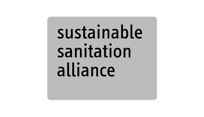Construction with waste materials recovers and repurposes discarded construction materials and those produced from recovered waste and building debris W.3. It can reduce waste, conserve resources and offer cost-effective solutions, especially where construction materials are scarce and expensive. The materials used must be safe, free from contamination and not contribute to the spreading of waste.

The utilisation of waste materials in construction can be a sustainable approach to building, diverting waste from controlled and uncontrolled disposal sites (U.8 - U.11) and reducing the consumption of virgin materials. It can be a cost-effective solution, especially where construction materials are scarce and expensive. Waste-based construction might include the recovery and repurposing of clean, (ideally) non-recyclable, construction materials, construction materials produced from waste or the repurposing of debris and rubble W.3. Using recyclables as construction materials is a last resort; they should, ideally, be handed over to the local recycling sector. The cost and risks of construction with waste materials should be compared to construction with conventional materials and the safe disposal of the waste. Materials used for construction must be clean, free from contamination and prevent the further spreading of waste. Particular attention must be paid to the presence of hazardous materials, such as asbestos in debris W.3, and the prevention of microplastic pollution T.8. Suitable waste materials are, ideally, collected at source to prevent soiling or contaminating the remaining waste. Points for collecting suitable waste for construction include households, institutions and debris management sites. Various waste materials can be used for construction, such as plastic and glass containers, tyres filled with sand and recovered wood, bamboo, tarpaulin or metal. Construction materials made from waste include plastic containers filled with plastic waste (Ecobricks in T.8) and pavement stones or tiles moulded from a plastic-sand mixture. Some products have reduced lifespans and are susceptible to UV-light degradation. Waste from rubble and debris can replace virgin bricks and stones or be crushed and used to produce recycling concrete aggregate W.3. Ash can be used as a structural filler or to replace virgin raw materials in cement.
Design Considerations
Planning must consider the types and quantities of waste materials available locally, their suitability for the intended construction purpose and the way they can be used that minimise breakdown and adverse effects on health and the environment. Evaluate the materials’ structural properties to determine their load-bearing capacity and durability and consider the effect on their performance and longevity of the local climate and environment. Assess the availability of skilled labour and appropriate tools and whether the use of waste-based materials in construction complies with national regulations, construction norms and building codes. Avoid competing with local construction material markets and negatively affecting local economies X.5.
Materials
Depending on the chosen construction technique and the scale of the project, tools and machinery range from simple hand tools (shovels and pickaxes) to heavy machinery (excavators and trucks). Workers must use suitable Personal Protective Equipment (PPE) X.4.
Applicability
Construction with waste materials is suitable in many contexts, especially those with limited availability of regular construction materials or excess waste due to conflicts and disasters. It is best applied in recovery and development phases, offering a cost-effective and sustainable solution for rebuilding infrastructure. The availability of materials, construction needs, local conditions, community acceptance, and skills must be considered. It can be scaled from individual houses to larger infrastructure, promoting resilient construction, creating livelihoods and stimulating local economies.
Operation and Maintenance
Using waste directly for construction requires continuous sourcing and sorting of waste. This may require ongoing community involvement and the establishment of collection points, or partnerships with waste management companies. The construction process requires skilled labour or training though some solutions are simple (such as earth-filled tyres). Others, such as Ecobricks, require new skills. Regular inspection and maintenance are essential to ensure the structural integrity and longevity of the constructions. The size of the workforce will depend on the size and complexity of the project. The most common pitfalls include poor material selection, the limited lifespan of waste-based construction materials and inappropriate construction techniques and lack of maintenance, compromising the safety and durability of the construction.
Health and Safety
To ensure the safety of construction workers and users of the built structures, the further spreading of waste must be prevented and waste materials for construction must be clean and free from contamination. Workers must be equipped with PPE X.4. Training in occupational safety and construction techniques is essential and must address the risks particular to waste such as hazardous materials, including asbestos W.2, and the public health and environmental risks of waste in general. Construction sites must be fenced off, and access limited to designated personnel only. Regular inspections and maintenance are essential to mitigate potential hazards and ensure the safety of all personnel.
Costs
Construction with waste materials can be cost-effective. The repurposing of existing resources is often cheaper than buying virgin materials. Cost is influenced by factors such as the scale and complexity of the project, the availability and suitability of local waste management infrastructure and the labour requirements. Though using waste materials can reduce the material costs of construction, it can increase training needs and corresponding costs. However, utilising waste materials has advantages beyond financial gain, as it can reduce waste and create income-generation opportunities.
Social Considerations
The use of waste materials in construction may confront cultural barriers related to waste and its perceived economic value. Some communities may view waste as unclean or unsuitable for construction. Individuals may also be accustomed to traditional building materials and methods. Their perceptions can be addressed through educational initiatives that foster an awareness and understanding of the potential benefits; demonstrating its advantages can increase acceptance X.6. It is essential for the success of a project to consider local capacity, including skills, knowledge and available resources. Training programmes and knowledge-sharing initiatives can empower communities to adopt and adapt these techniques, increasing their sustainability and ownership X.2.
Key Decision Criteria
Input Products
Products from Processed Plastic
Response Phase
Application Level
Management Level
Space Required
medium
Technical Complexity
medium
Objectives & Key Features
Repurposing and use of recycled materials for construction
Strength & Weakness
- Reduces waste and promotes resource conservation
- Can offer a cost-effective and accessible construction option
- Requires careful planning and consideration of material suitability and safety
- May face cultural barriers or resistance
- Requires training and skill development for proper implementation






